If you have a media player powered by Windows make sure it’s Windows 7, 8, 10, or 11. All versions (Home, professional, etc.) are supported. Windows is known as one of the strongest platforms on the market for running high-performance digital signage.
Go sign up at my.playsignage.com, using Facebook, Google, Microsoft, or simply a username and password.
Watch the video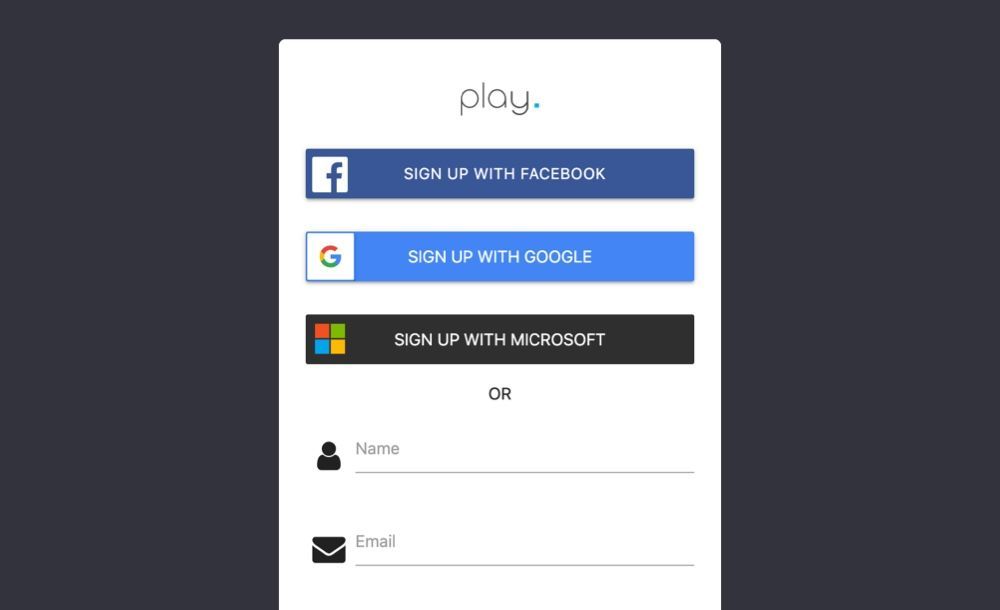
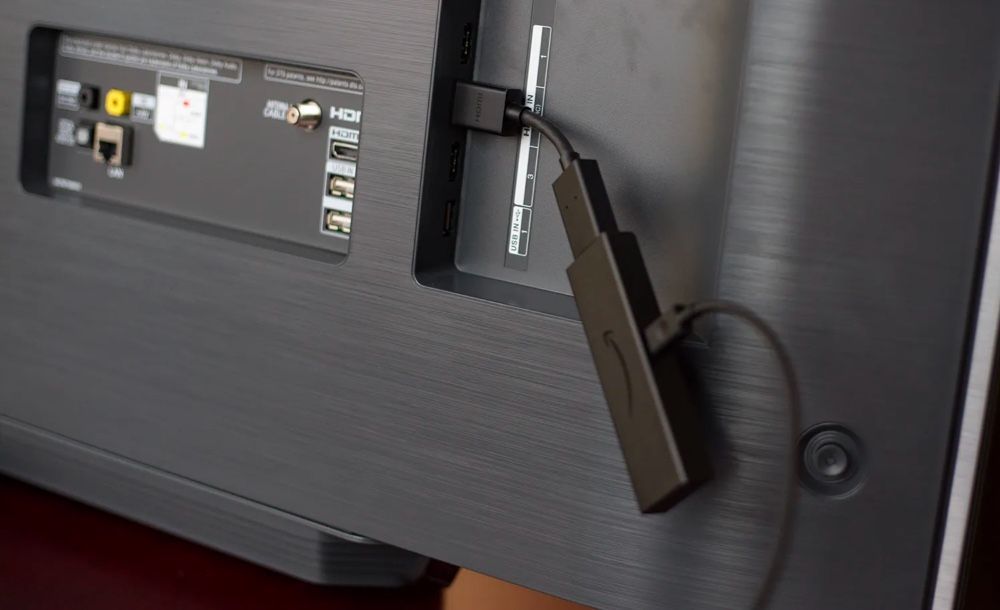
Windows 10/11: Click here to download the APP.
Looking for 32bit version? Download 32bit version (Windows 10/11).
Windows 7 or 8 device? Download older version of our APP.
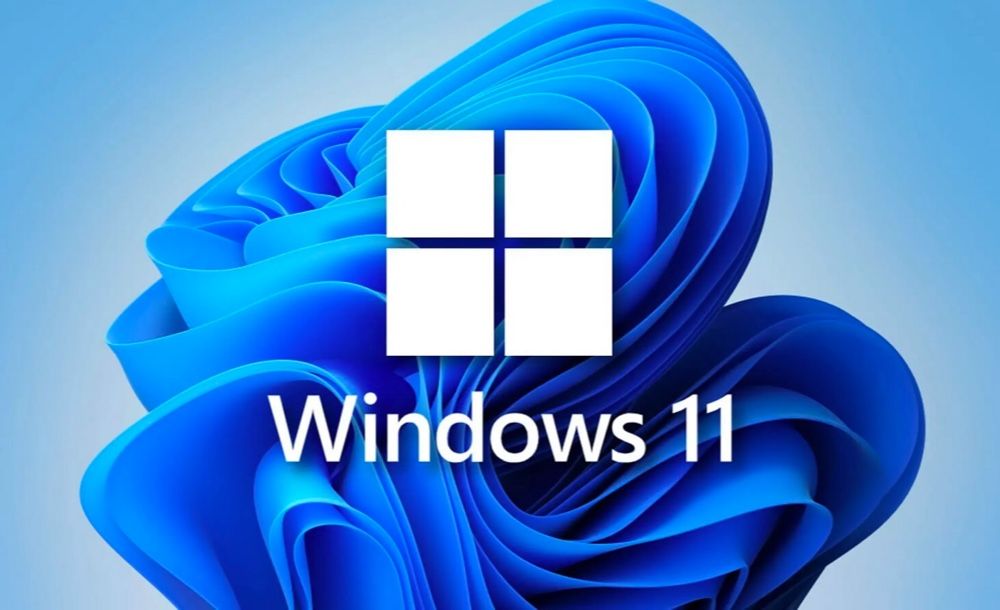
Log in at my.playsignage.com, then go to Screens -> Add screen, and use the code from the TV to link the Screen to your account.
Watch the video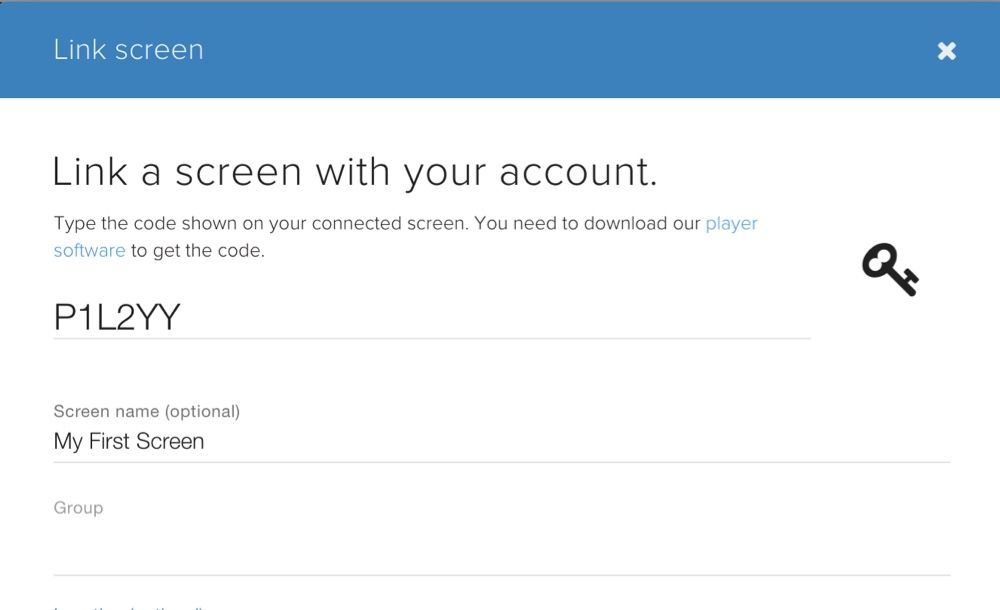
It’s time to get creative. Assuming you’re already logged in, go to Playlists, create a playlist, and start designing your content.
Watch the video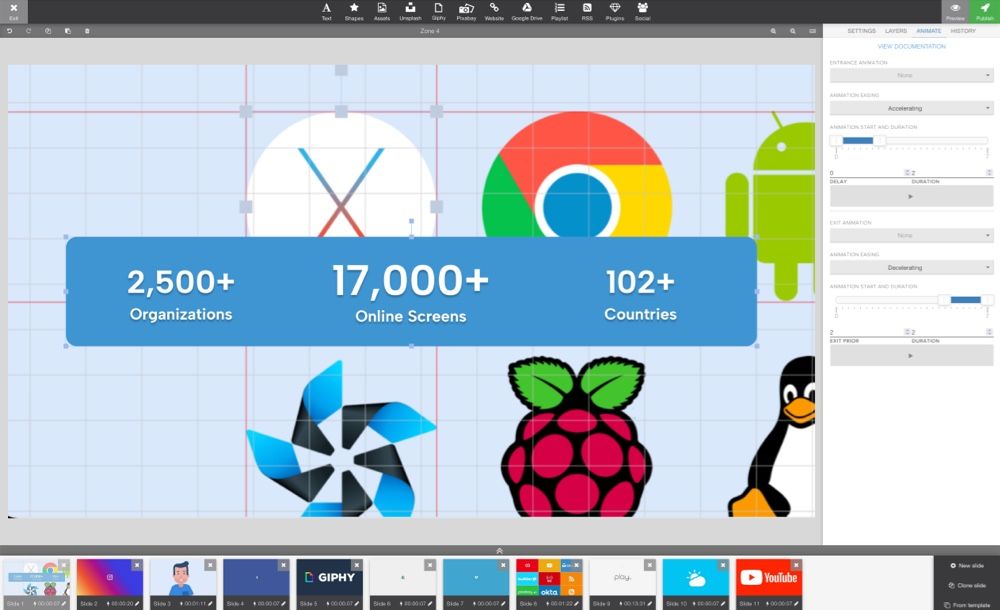
The last step is linking your content to your screen. Go to Groups & Schedules, pick your playlist in the group’s base playlist, then drag and drop your screen to the group and click Publish.
Watch the video
We've gathered some of the most common features that you may need to get your Windows media player up and running smooth.
Launching the APP on startup is not on when you first install our APP. If you want the APP to launch after a power outage or simply when you power on your player go to my.playsignage.com, Screens, open the settings for the screen, and toggle on Launch APP on startup.
See the Windows section of our portrait guide.
Unlike previous versions, there is no official way to turn off automatic updates on Windows 10 machines. That is good from the security perspective, however, digital signage operators often prefer that their devices do not start updating in the middle of the day. If the updates are disabled and an exploit is found in Windows, your device will be exposed to the exploit as it won’t get the latest security updates. If you decide to turn off the automatic updates, we recommend making sure that at least the Windows Defender Firewall is turned on.
This software is created by Sordum, read more about the update blocker here.
There is a built-in auto-updater, however, in certain circumstances, the software is not automatically updated. You can apply the update manually without having to link the screen again:
Options can be accessed directly on the TV by using OPTIONS.
Options can be accessed directly by the player or in settings for your player.
I got my screen linked, what next?
We recommend checking out our Getting Started video.
Design your contentYou probably have an outdated version of the .NET framework, download and install the most recent .NET Framework version.
The player downloads files to C:\Users\%USERNAME%\AppData\Roaming\PlaySignage\assets
Please note that the AppData folder is hidden in Windows by default, if you don’t know how to show hidden files, click here to see a guide.
By default, the application enables a maximum of one window, however in situations where you have a Windows machine with several monitors, you may need to run one player application per monitor. To do this, you need to set a different data directory for each application window using the --data-dir parameter, for example:
C:\Users\%USERNAME%\AppData\Local\Programs\PlaySignage\PlaySignage.exe --data-dir=C:\playsignage-app2
Some Windows machines have a quirk where the cursor is showing after rebooting the player. This can not be fixed by our software as Windows does not update the mouse cursor location after our app starts, so the cursor does not register as hovering over the app. The simple fix is to install additional software to auto-hide the cursor:
Download & unzip the file, you will find a simple program that works with the default configuration
Though our app tells Windows to launch it in full screen and in Kiosk mode, sometimes the taskbar can creep back up, this can be also triggered by 3rd party programs showing notifications. The simplest solution is to configure Windows to auto-hide the taskbar, however, some users have reported the taskbar not hiding even if it’s set to hide – it seems to be a Windows issue that happens inconsistently on some machines. You can work around the issue with a 3rd party program to hide the taskbar altogether with a configured hotkey, click here to download TaskBar Autohider. Please note that after a restart this program does start up, but it does not hide the taskbar, so it is important to disable the nightly reboot of the player – you can do so in the screen settings in our web portal.
Our app has a built-in heartbeat mechanism where one process pings another process to ensure that it is running, and if not, it will start up again. While this solution recovers from most types of crashes, there is an exception when it comes to Windows killing our app when it is about to run out of RAM. Since both of these processes are part of the same program, the heartbeat mechanism would get killed as well. While not necessary for most installations, users who run our app on a more demanding environment, such as large public LED screens can further increase the reliability by having the heartbeat done by a 3rd party program instead, then it is not subject to being killed by the operating system.
Option 1 – Windows scheduler batch script
We can schedule a repeating task using the Windows scheduler to start the Play Digital Signage player app every minute. If the app is already running, then the new instance will be exited immediately.
Option 2 – Windows scheduler manually via command
SCHTASKS /CREATE /SC ONLOGON /DELAY 0001:00 /TN "PlaySignage watchdog" /TR "C:\Users\%%USERNAME%%\AppData\Local\Programs\PlaySignage\PlaySignage.exe"SCHTASKS /CHANGE /RI 1 /TN "PlaySignage watchdog"In case you plan to use the Windows machine for other tasks, you’ll want to delete the task that is starting up the Play Digital Signage app every minute, you can do so with the following command in the “Run as administrator” command prompt: SCHTASKS /DELETE /TN "PlaySignage watchdog" /F
Option 3 – Play Digital Signage companion program
This is a simple program that runs every minute and checks that PlaySignage.exe is running, if it’s not, it will start it.
By default as a security precaution, the application does not show websites with certificate errors. However, if you need to show a website that does not have a valid SSL certificate, you can launch the app with a --ignore-certificate-errors parameter, for example:
C:\Users\%USERNAME%\AppData\Local\Programs\PlaySignage\PlaySignage.exe --ignore-certificate-errors
There is a built-in auto-updater, however, in certain circumstances, the software is not automatically updated. You can apply the update manually without having to link the screen again:
If you are using Windows Management Instrumentation (WMI), it may block our software from querying disc usage. You can fix it by executing the following command in the command prompt: winmgmt /resetrepository
Since Microsoft is no longer supporting Windows 7, it has issues with the root certificate. That means certain SSL (HTTPS) certificates that are issued aren't considered valid by the operating system. You can try installing an update from here: https://www.microsoft.com/en-us/download/details.aspx?id=45633
Windows 10 has a special accessibility setting to disable animations. It is likely that the animations are disabled with that setting, you can find it in Settings -> Ease of Access -> Other options -> Play animations
Enable & disable animationsIf one or more plugins don’t work on your Windows, it’s possible that the PlaySignage app on your player device is out of date. Click here to learn more.
In the APP options, you can hide the top menu bar if you for example are running a touch screen. To access the top menu bar, when hidden, you can use CTRL + O for options or CTRL + Q to close the APP.
Windows 10 and 11 have the functionality to set up assigned access for a single user and application (kiosk mode), the caveat being the application must be UWP appx installed from the Windows Store. Our app is also listed on Windows Store, however to our disappointment we discovered that Microsoft does not support the technology stack we use (electron) for their kiosk mode, this is a limitation of the internal Edge browser webview unfortunately.
Windows Digital Signage is both stable and has the resources to run 24/7 production screens, large area screens, LED totems, etc. But keep in mind, that Windows Digital Signage can be limited by the hardware. If the hardware is old and obsolete it might not have the resources to run the content you’d like.
Most people think designing content for digital signage is super difficult, but if you can use Powerpoint, you can also create and design your own content in our editor.